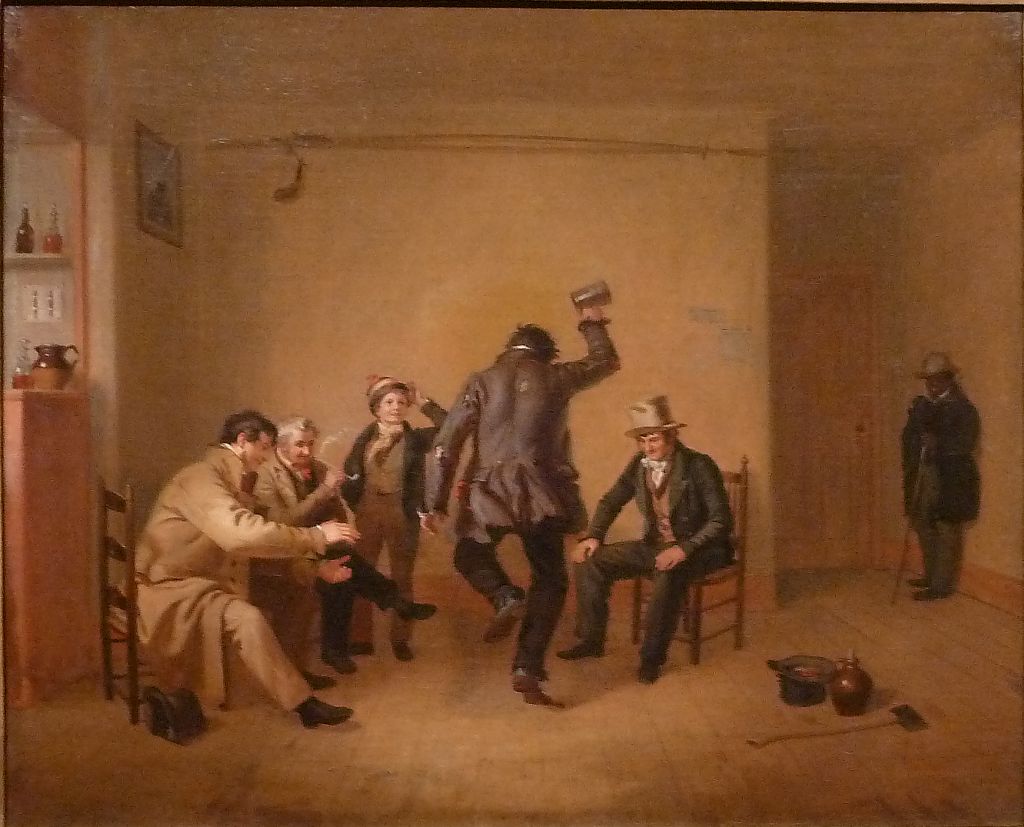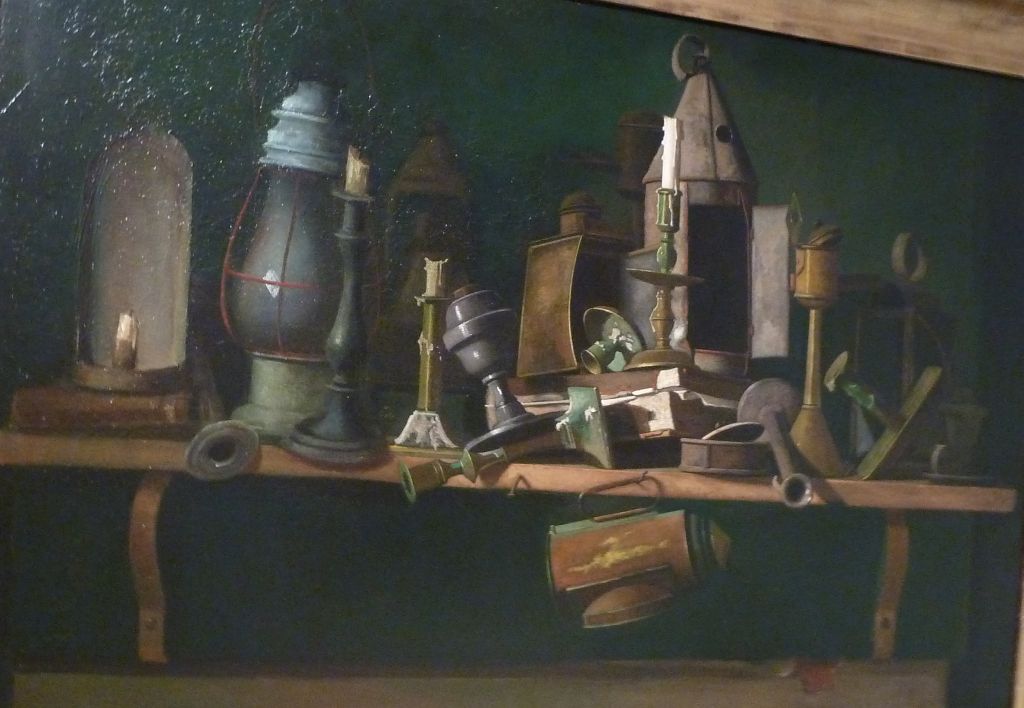A couple of weekends ago, I had the opportunity to attend the Association of Writers and Writing Programs (AWP) Conference in Chicago . I picked up so many literary journals at the book fair I had to make a trip to the post office to mail them before flying home. On my return to the hotel, I passed the Art Institute of Chicago and made a mental note to return.
 Why? Because I love art. But also for historical research. Photography did not appear until the mid-19th century, and then, only in its crudest forms. Painters of the 19th century, with the advent of realists like Millet and Courbet, focused on capturing real people in real life settings. Above is a painting in the Art Institute by William Sidney Mount called “Walking the Line.” Painted in 1835, during the era of the Andrew Jackson presidency, it depicts clothing and entertainment of the time, as well as the antebellum racial divide. (Classroom guides and resources related to this painting and others by Mount can be ordered from the Art Institute of Chicago here.)
Why? Because I love art. But also for historical research. Photography did not appear until the mid-19th century, and then, only in its crudest forms. Painters of the 19th century, with the advent of realists like Millet and Courbet, focused on capturing real people in real life settings. Above is a painting in the Art Institute by William Sidney Mount called “Walking the Line.” Painted in 1835, during the era of the Andrew Jackson presidency, it depicts clothing and entertainment of the time, as well as the antebellum racial divide. (Classroom guides and resources related to this painting and others by Mount can be ordered from the Art Institute of Chicago here.)
And check out this painting called “Lights of Other Days.”  A still life of snuffed out lanterns? What is John F. Peto trying to tell us with this artwork about the second half of the 19th century? By 1906, the light bulb was all the rage, but here one gets a forlorn sense of old ways being left behind.
A still life of snuffed out lanterns? What is John F. Peto trying to tell us with this artwork about the second half of the 19th century? By 1906, the light bulb was all the rage, but here one gets a forlorn sense of old ways being left behind.
Below is the painting that most captured my imagination, which I post here for Angela, who has helped me so often and so long with research and translations for Harm’s Way. “The Ghost Dance” was painted by Ralph Blakelock in 1895, five years after the Sioux massacre of 1890 at Wounded Knee. Simon Kawitzky has written an entire thesis on the subject. He writes: “.. in The Ghost Dance, Blakelock distinctly melds the ether of the dancing spirits into the matter of the forest as they disappear into oblivion and are lost forever.”


2 responses to “Pictures of other days”